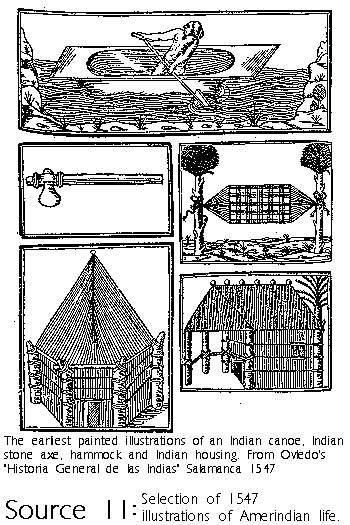
"The soil is fertile... The sea... holds a wide selection of underwater life..."
AFTER A LONG HISTORY OF MIGRATION THIS ATTRACTIVE RACE SETTLED IN THE BAHAMAS AND PRACTICED A VARIETY OF PRIMITIVE SKILLS: THEIR GOVERNMENT WAS SIMPLE BUT THEIR RELIGION WAS WELL DEVELOPED.
HISTORY OF MIGRATION
Originating in South America, Lucayans shared the culture of the Greater Antilles which was threatened by marauding Caribs.
About 500 B.C. Arawak Indians began migrating to the West Indian islands from their homes on the banks of the Orinoco River, Venezuela.
By 1000A.D. Arawaks were living on Haiti, some went on to inhabit Cuba and Jamaica; others settled in the Bahamas, calling themselves 'lukku cairi' hence Lucayans.

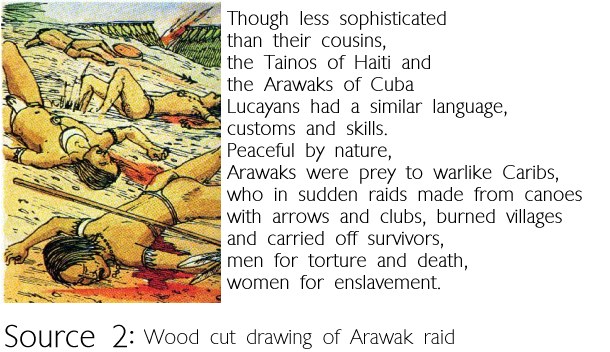
ATTRACTIVE RACE
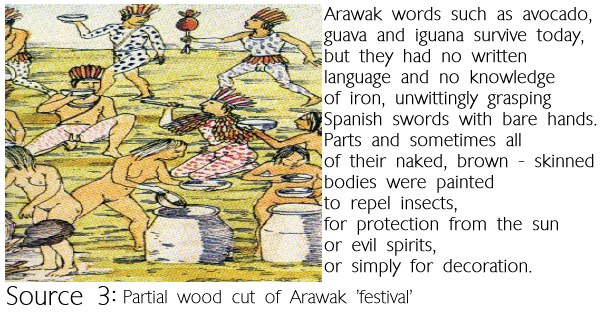
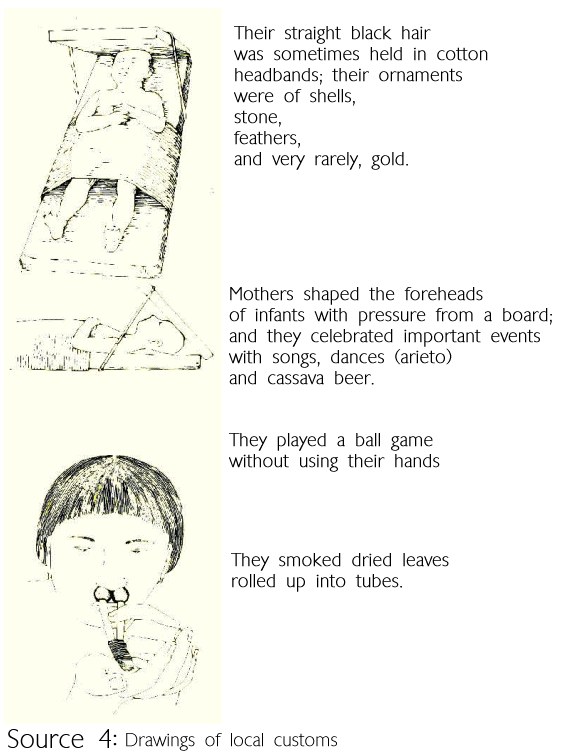
PRIMITIVE SKILLS
They were skilled at providing food and in the use of natural materials and were completely at home on the sea.
Clearings were made in the bush by the slash and burn method; women planted and tended yams, cassava and maize, while children kept away birds. Men hunted - hutia, iguana, snakes - and fished, using bone-tipped spears and hooks, and remora to catch turtles. They built strong palm-thatched houses, weaving vines through wooden posts arranged in a circle around a central pole.


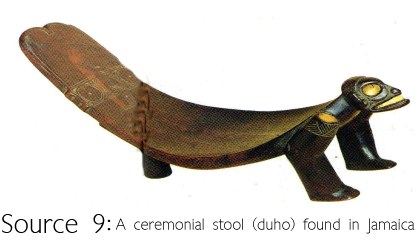
GOVERNMENT
Living in small communities they obtained what government they needed from a respected and privileged chief.
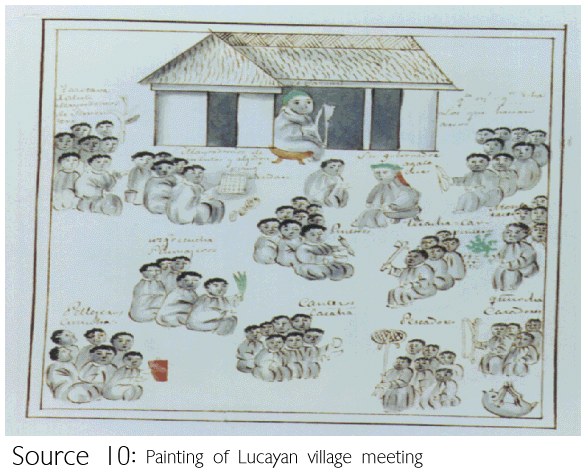
Compared with Arawak settlements in the larger islands those of the Lucayans were small; Columbus said that the largest he saw had only fifteen huts; most villages were smaller. Each settlement had its own hereditary chief, or cacique, who performed the duties of lawmaker, enforcer and judge. (there was little crime but for stealing the punishment was death by impalement.) He also decided when to plant and harvest crops, which were brought to him for distribution. The cacique lived in the largest hut, had the best canoe, and wore the finest decorations, such as a cloak of feathers, and ornaments made of stones like jasper and jade.
RELIGION
Priests guarded the tribal mythology and directed the worship of spirits with whom they communicated in elaborate ceremonies.
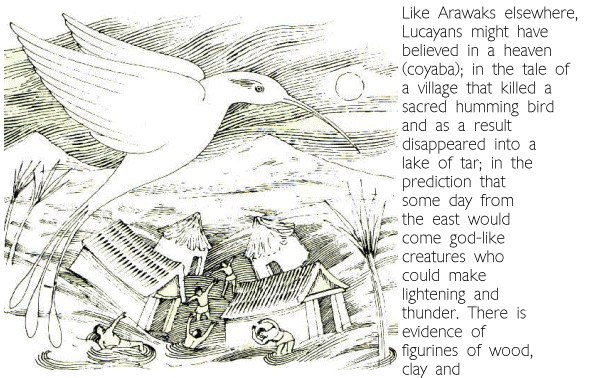 stone shaped in the likeness of humans, animals and birds: these represented good spirits (zemis) [Source 7] which they worshipped with offerings of food, hoping for protection from sickness hurricanes and evil spirits (opia). On special occasions, the chief priest, usually the cacique, led the villagers in a ceremony during which he smoked dried herbs (cahoba) and inhaled through a Y-shaped pipe [Source 4] a stronger narcotic (yopo) to see visions and communicate with spirits.
stone shaped in the likeness of humans, animals and birds: these represented good spirits (zemis) [Source 7] which they worshipped with offerings of food, hoping for protection from sickness hurricanes and evil spirits (opia). On special occasions, the chief priest, usually the cacique, led the villagers in a ceremony during which he smoked dried herbs (cahoba) and inhaled through a Y-shaped pipe [Source 4] a stronger narcotic (yopo) to see visions and communicate with spirits.
